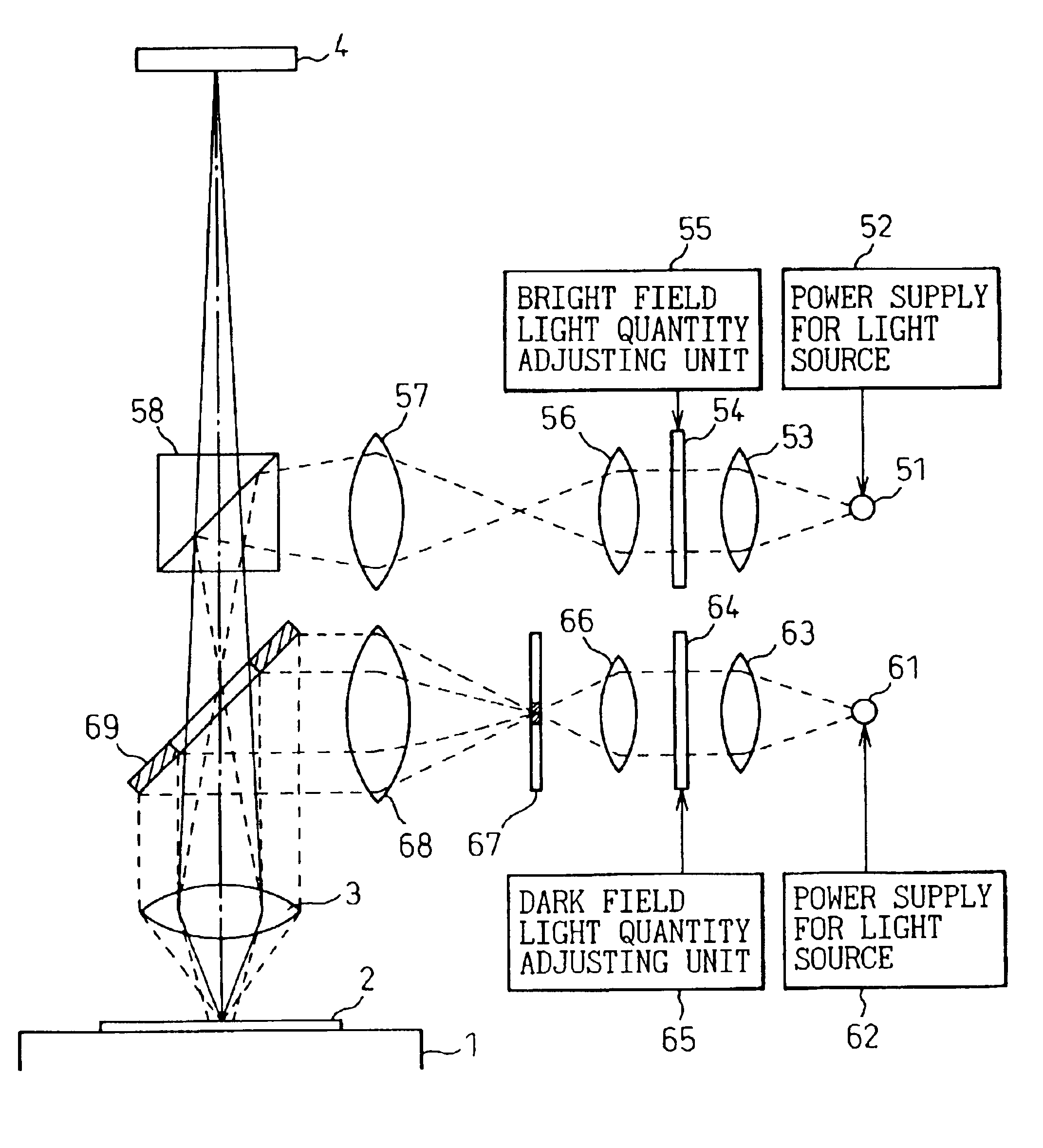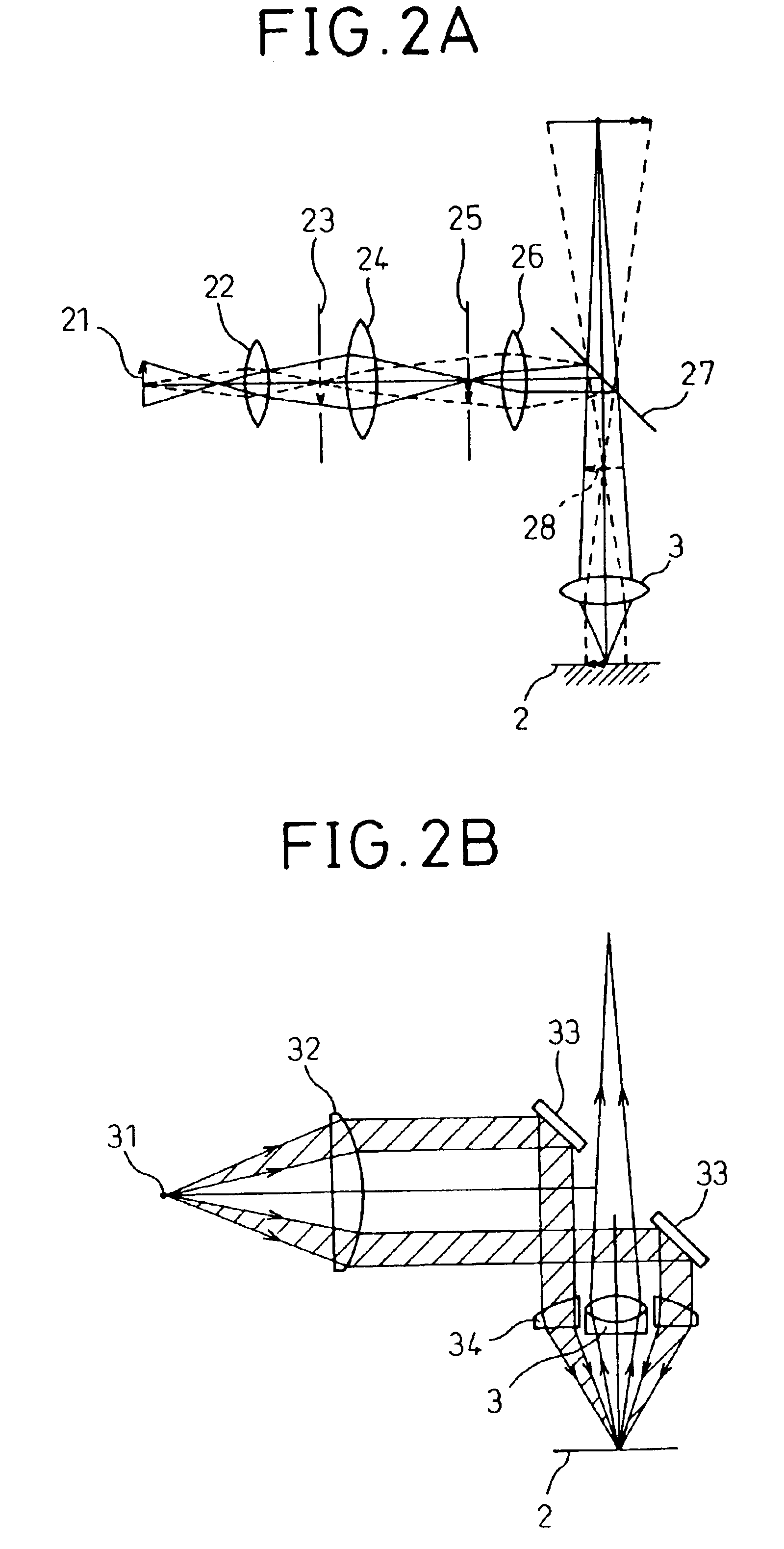Wafer defect inspection machine having a dual illumination system
a defect inspection machine and dual illumination technology, applied in the direction of optical elements, semiconductor/solid-state device testing/measurement, instruments, etc., can solve the problems of inability to illuminate the bottom part of the wafer pattern, inability to detect defects in the pits of the pattern, and image not so bright, etc., to achieve the effect of low cos
- Summary
- Abstract
- Description
- Claims
- Application Information
AI Technical Summary
Benefits of technology
Problems solved by technology
Method used
Image
Examples
Embodiment Construction
FIG. 4 is a diagram that shows the optical system of the defect inspection machine for semiconductor wafers in the embodiments of the present invention. Other parts shown in FIG. 1 are omitted here.
As shown in FIG. 4, the defect inspection machine for semiconductor wafers in the present embodiment comprises the stage 1 that holds the semiconductor wafer 2, the objective lens 3 that projects the optical image of the surface of the semiconductor wafer 2, the image sensor 4 that converts the projected optical image of the surface of the semiconductor wafer 2 into electric image signals, a bright field illumination system and a dark field illumination system. The bright field illumination system comprises a light source 51, a power supply for light source 52, an illumination lens 53, a light quantity adjusting filter 54, a bright field light quantity adjusting unit 55, illumination lenses 56 and 57 and a semi-transparent mirror (a beam splitter) 58. Although apertures can be provided as...
PUM
| Property | Measurement | Unit |
|---|---|---|
| defect inspection | aaaaa | aaaaa |
| wafer defect inspection | aaaaa | aaaaa |
| structure | aaaaa | aaaaa |
Abstract
Description
Claims
Application Information
 Login to View More
Login to View More - R&D
- Intellectual Property
- Life Sciences
- Materials
- Tech Scout
- Unparalleled Data Quality
- Higher Quality Content
- 60% Fewer Hallucinations
Browse by: Latest US Patents, China's latest patents, Technical Efficacy Thesaurus, Application Domain, Technology Topic, Popular Technical Reports.
© 2025 PatSnap. All rights reserved.Legal|Privacy policy|Modern Slavery Act Transparency Statement|Sitemap|About US| Contact US: help@patsnap.com



